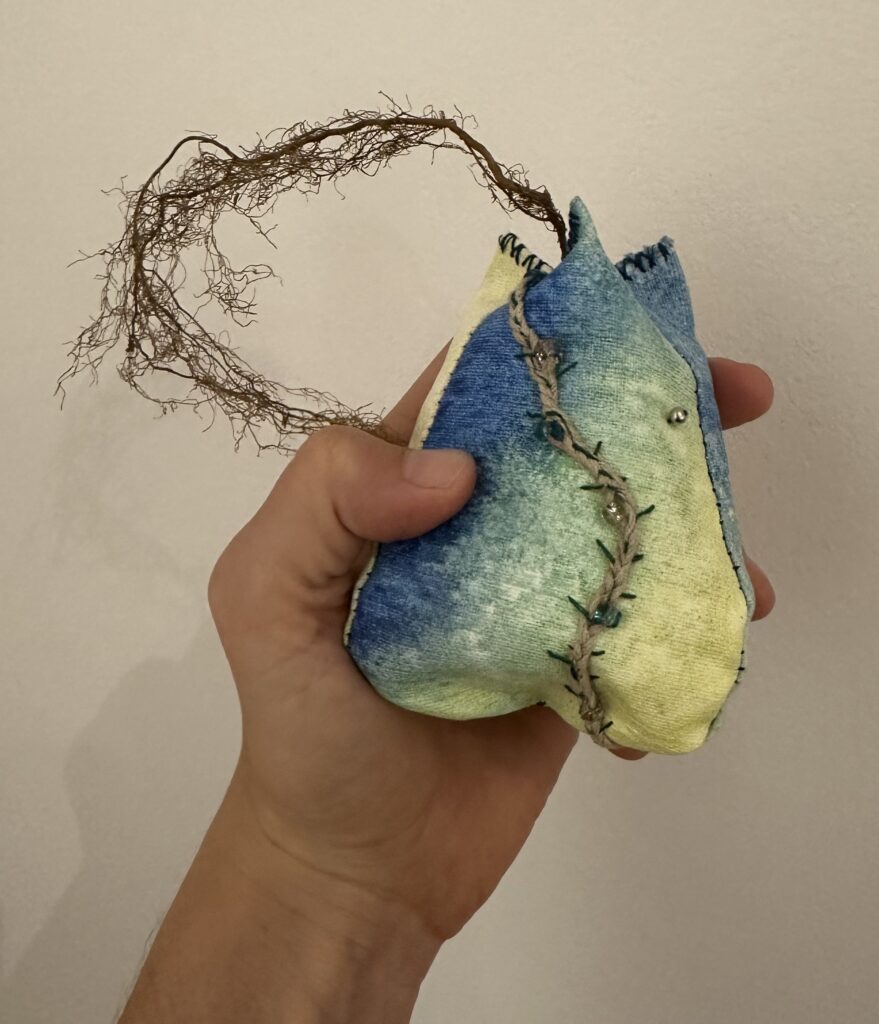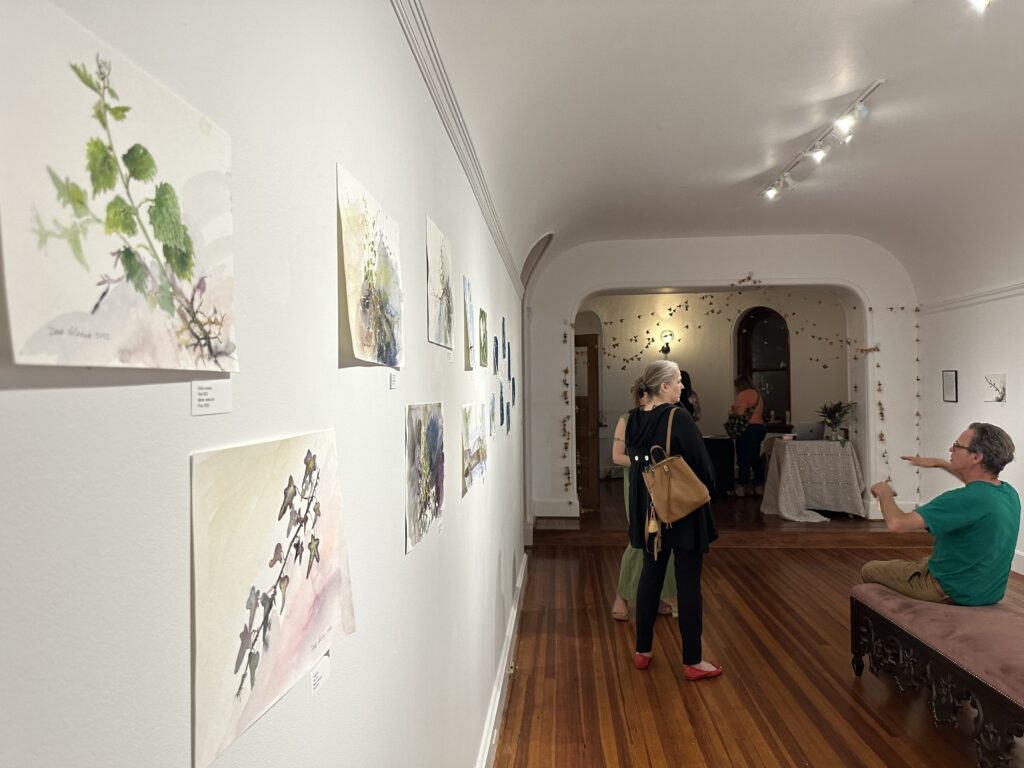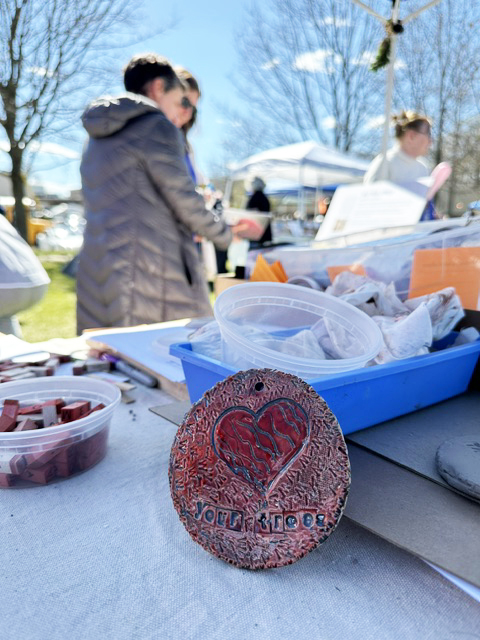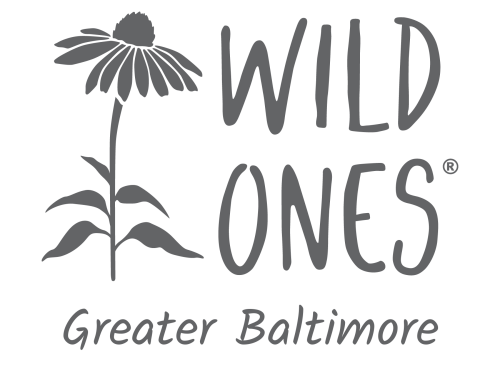by Brigit Burbank ✎
Inna Alesina is an artist, professor, community organizer, and fellow Wild Ones member. She has been volunteering at Gunpowder State Park for the past four years and has seen firsthand the damaging effects invasive plants can have on our wild spaces. Inna found the Wild Ones group after an unsuccessful attempt to convince her neighbors to replace their barberry bushes with native shrubs.
Awareness through art
Her story is inspiring in its familiarity. How many of us have tried to do the same only to be met with resistance? If you are Inna Alesina, this is merely a minor setback. What began as a search for native plants has expanded to include tabling at block parties, tree plantings, artwork devoted to invasive plants, and more.

Community engagement
In her work, Inna strikes an artful balance between education, appreciation, and community building. Thanks to a grant called Public Arts Across Maryland, Inna has been able to support her community engagement projects and native plantings.
As part of her efforts towards that grant she set up a table at the Jewish Community Center of Great Baltimore’s community block party in April. She has many ideas for community projects, but she thought it wise to survey the community first and let them decide which projects she should put her energy towards. She created an online survey and allowed people to place stickers on the projects that they connected with the most.


Inna aligns her work with the Jewish values of bal tashchit, meaning do not destroy or do not waste and tikkun olam, meaning repairing the world. Her art embodies these values by making something beautiful or edible out of invasive plant material that would otherwise be placed in landfills.
In May, Inna held an art gallery opening that showcased her multidisciplinary work. As part of the gallery show, Inna offered to exchange evidence of invasive plant removal for a unique watercolor painting.
She exchanged four unique watercolors for invasive plants such as vinca minor, oriental bittersweet, garlic mustard, Star of Bethlehem, and Japanese snowball viburnum. She also sold several pieces that included cyanotypes and watercolors of invasive plants. An entire room at the gallery was devoted to sharing some of her artistic process and invasive plant recipes such as Japanese barberry rice pilaf and linden viburnum compote.
A creative call to help the natural world
Part of what makes Inna so inspiring is her ability to get out there and just try stuff. If one of her ideas doesn’t work as well as she imagined it would, she moves on and tries something different. Her drive seems to come from a place of wanting to share what is meaningful to her: the serenity of nature and woodland trails, connection with the land, and connection with community.

Her artwork and many community projects remind me of a passage in Braiding Sweetgrass where Robin Wall Kimmerer (2013, 207) writes:
“America has been called the home of second chances. For the sake of the peoples and the land, the urgent work of the Second Man may be to set aside the ways of the colonist and become indigenous to place. But can Americans, as a nation of immigrants, learn to live here as if we are staying? With both feet on the shore?”
—Robin Wall Kimmerer

This is what I imagine those steps towards having both feet on the shore will look like. Noticing the land, caring for it, teaching others, and creating beauty and nourishment from what you find. ❀
References
Kimmerer, Robin Wall. 2013. Braiding Sweetgrass. Canada: Milkweed Editions.
